Light Bulbs
Cordlesspowertools Canada Online stores have a wide range of Light Bulbs Products that are available in different types and prices. Popular brands like Bosch, Dewalt, Hitachi, Dongcheng, Cumi, KPT, Ferm, Black Decker, Makita, Jon Bhandari, Ken, Metabo, Bullet, Planet Power, Stanley, Maktec, Ralli Wolf, AOG, Falcon, Hit-Min, IDeal, Eastman, Fein, Electrex, Craftsman, AEG, Zogo, Xtra Power, DCA, Yuri have a vast range of models available with different designs and functionalities. You can easily browse through the products, compare them and choose the one that best fits your needs.
-
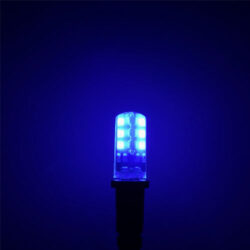
Black Light Bulbs (1)
-
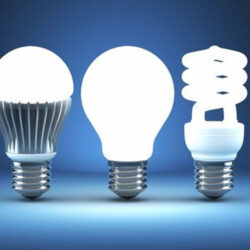
Compact Fluorescent Bulbs (1)
-
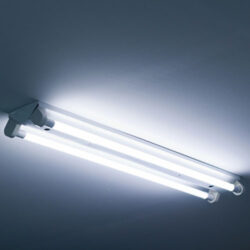
Fluorescent Tubes (1)
-
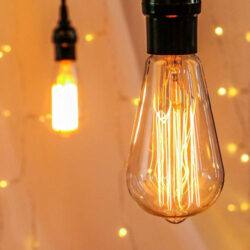
Incandescent Bulbs (1)
-
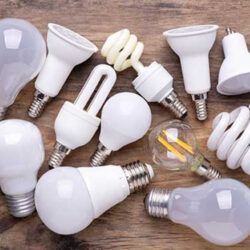
LED Bulbs (1)
Light Bulbs
Light bulbs are ubiquitous fixtures in our daily lives, and they have come a long way since their inception. These small, yet indispensable devices have revolutionized how we illuminate our homes, workplaces, and public spaces. A light bulb typically consists of several essential components, including a filament or LED source, a glass or plastic envelope, and a base for connection to an electrical socket. The most traditional type of light bulb, the incandescent bulb, works by passing an electric current through a thin filament, usually made of tungsten.
This process generates intense heat, causing the filament to glow and emit light. However, incandescent bulbs are not particularly energy-efficient, as they waste a significant portion of their energy as heat. When it comes to buying light bulbs, it's essential to consider a variety of factors to ensure you're making the right choice for your specific needs. The first and most crucial consideration is the type of bulb technology. Traditional incandescent bulbs, while inexpensive upfront, are not very energy-efficient and have a shorter lifespan compared to more modern options.
Types
Incandescent Light Bulbs:
Incandescent light bulbs are the classic, familiar light bulbs that have been use for decades. They work by passing an electric current through a tungsten filament, which becomes so hot that it emits visible light. These bulbs are known for their warm and cozy glow, but they are not very energy-efficient. A significant portion of the energy they consume is converted into heat rather than light, making them less environmentally friendly compared to other options.
Compact Fluorescent Lamps (CFLs):
Compact fluorescent lamps, or CFLs, are energy-saving alternatives to incandescent bulbs. They work by using a different mechanism to produce light. Inside the bulb, a gas is ionized by an electric current, which causes the gas to emit ultraviolet (UV) light. This UV light then interacts with a phosphorescent coating inside the bulb to produce visible light. CFLs are more energy-efficient than incandescent bulbs and have a longer lifespan. However, they can take a moment to reach full brightness and contain a small amount of mercury, which requires proper disposal.
Halogen Bulbs:
Halogen bulbs are a type of incandescent bulb that uses a halogen gas (such as iodine or bromine) to improve efficiency and extend the lifespan of the bulb. The halogen gas helps to redeposit evaporated tungsten back onto the filament, which makes the bulb last longer than traditional incandescent bulbs. Halogen bulbs produce a bright and crisp white light, similar to natural sunlight. They are commonly use in applications that require focuse and directional lighting, such as track lighting and automotive headlights.
LED (Light Emitting Diode) Bulbs:
LED bulbs are one of the most energy-efficient and long-lasting lighting options available today. They work by passing a current through a semiconductor material, which emits light. LEDs produce very little heat compared to incandescent bulbs, which makes them highly efficient in converting energy into visible light. They come in a wide range of colors and are often dimmable. LED technology has advanced significantly, allowing for various shapes, sizes, and color temperatures to suit different lighting needs. While LED bulbs are initially more expensive than other types, their energy savings and extended lifespan often make up for the higher upfront cost over time.
Smart Bulbs:
Smart bulbs are a recent innovation that allows you to control your lighting through wireless technology, such as Wi-Fi or Bluetooth. These bulbs can be connected to a smartphone app, smart home hub, or voice-controlled devices like Amazon Echo or Google Home. With smart bulbs, you can adjust the brightness, and color, and even set schedules or automation routines. Some smart bulbs also have features like color-changing capabilities, allowing you to create various atmospheres in your living spaces.
Benefits of Light Bulbs:
Illumination: The primary purpose of light bulbs is to provide illumination. They enable us to see and perform various tasks, both indoors and outdoors, during the day and at night.
Energy Efficiency: Many modern light bulbs are designed to be energy-efficient, consuming less electricity while producing the same amount of light as traditional incandescent bulbs. LED (Light Emitting Diode) bulbs, in particular, are known for their energy efficiency and long lifespan.
Longevity: LED bulbs, in particular, have a much longer lifespan compared to traditional incandescent bulbs. This means fewer replacements are need, reducing maintenance costs and waste.
Variety of Colors: LED bulbs can produce a wide range of colors without the use of filters, allowing for creative lighting solutions and ambiance control.
Instant On: Unlike some other types of bulbs that may take time to reach full brightness, LED bulbs provide instant illumination when turned on.
Cooler Operation: LED bulbs generate less heat compared to incandescent bulbs, making them safer to touch and reducing the risk of fires or burns.
Directional Lighting: Many light bulbs, especially LEDs, can be design to emit light in specific directions, which is useful for tasks that require focuse illumination.
Dimmability: Many LED bulbs are dimmable, allowing you to adjust the brightness according to your needs and preferences.
Environmental Impact: Energy-efficient bulbs, such as LEDs, have a lower carbon footprint due to their reduced energy consumption, helping to mitigate the environmental impact of lighting.
Safety Considerations:
Heat Generation: Incandescent bulbs can become very hot during operation, posing a risk of burns if touched. LED bulbs generate significantly less heat, reducing this risk.
Breakage: When a traditional incandescent bulb breaks, the glass can shatter into sharp pieces. LED bulbs are generally more durable and are less likely to shatter, making them safer in case of breakage.
UV Emission: Some light bulbs, particularly halogen and CFL (Compact Fluorescent Lamp) bulbs, can emit small amounts of ultraviolet (UV) radiation, which can be harmful if exposed to the skin or eyes for extended periods. LED bulbs emit negligible UV radiation.
Mercury Content: CFL bulbs contain a small amount of mercury vapor, which is releas if the bulb breaks. This can be hazardous if not handled and disposed of properly. LED bulbs do not contain mercury.
Electrical Safety: As with any electrical appliance, there is a potential for electrical shock or fire if light bulbs are not install or use correctly. Always follow safety guidelines and use appropriate fixtures and wiring.
Compatibility: Some dimmable LED bulbs may not be compatible with all dimmer switches, potentially causing flickering or other issues.
Quality Assurance: Choosing bulbs from reputable manufacturers ensures that they meet safety and performance standards.
Light Bulbs
Light bulbs are ubiquitous fixtures in our daily lives, and they have come a long way since their inception. These small, yet indispensable devices have revolutionized how we illuminate our homes, workplaces, and public spaces. A light bulb typically consists of several essential components, including a filament or LED source, a glass or plastic envelope, and a base for connection to an electrical socket. The most traditional type of light bulb, the incandescent bulb, works by passing an electric current through a thin filament, usually made of tungsten.
This process generates intense heat, causing the filament to glow and emit light. However, incandescent bulbs are not particularly energy-efficient, as they waste a significant portion of their energy as heat. When it comes to buying light bulbs, it's essential to consider a variety of factors to ensure you're making the right choice for your specific needs. The first and most crucial consideration is the type of bulb technology. Traditional incandescent bulbs, while inexpensive upfront, are not very energy-efficient and have a shorter lifespan compared to more modern options.
Types
Incandescent Light Bulbs:
Incandescent light bulbs are the classic, familiar light bulbs that have been use for decades. They work by passing an electric current through a tungsten filament, which becomes so hot that it emits visible light. These bulbs are known for their warm and cozy glow, but they are not very energy-efficient. A significant portion of the energy they consume is converted into heat rather than light, making them less environmentally friendly compared to other options.
Compact Fluorescent Lamps (CFLs):
Compact fluorescent lamps, or CFLs, are energy-saving alternatives to incandescent bulbs. They work by using a different mechanism to produce light. Inside the bulb, a gas is ionized by an electric current, which causes the gas to emit ultraviolet (UV) light. This UV light then interacts with a phosphorescent coating inside the bulb to produce visible light. CFLs are more energy-efficient than incandescent bulbs and have a longer lifespan. However, they can take a moment to reach full brightness and contain a small amount of mercury, which requires proper disposal.
Halogen Bulbs:
Halogen bulbs are a type of incandescent bulb that uses a halogen gas (such as iodine or bromine) to improve efficiency and extend the lifespan of the bulb. The halogen gas helps to redeposit evaporated tungsten back onto the filament, which makes the bulb last longer than traditional incandescent bulbs. Halogen bulbs produce a bright and crisp white light, similar to natural sunlight. They are commonly use in applications that require focuse and directional lighting, such as track lighting and automotive headlights.
LED (Light Emitting Diode) Bulbs:
LED bulbs are one of the most energy-efficient and long-lasting lighting options available today. They work by passing a current through a semiconductor material, which emits light. LEDs produce very little heat compared to incandescent bulbs, which makes them highly efficient in converting energy into visible light. They come in a wide range of colors and are often dimmable. LED technology has advanced significantly, allowing for various shapes, sizes, and color temperatures to suit different lighting needs. While LED bulbs are initially more expensive than other types, their energy savings and extended lifespan often make up for the higher upfront cost over time.
Smart Bulbs:
Smart bulbs are a recent innovation that allows you to control your lighting through wireless technology, such as Wi-Fi or Bluetooth. These bulbs can be connected to a smartphone app, smart home hub, or voice-controlled devices like Amazon Echo or Google Home. With smart bulbs, you can adjust the brightness, and color, and even set schedules or automation routines. Some smart bulbs also have features like color-changing capabilities, allowing you to create various atmospheres in your living spaces.
Benefits of Light Bulbs:
Illumination: The primary purpose of light bulbs is to provide illumination. They enable us to see and perform various tasks, both indoors and outdoors, during the day and at night.
Energy Efficiency: Many modern light bulbs are designed to be energy-efficient, consuming less electricity while producing the same amount of light as traditional incandescent bulbs. LED (Light Emitting Diode) bulbs, in particular, are known for their energy efficiency and long lifespan.
Longevity: LED bulbs, in particular, have a much longer lifespan compared to traditional incandescent bulbs. This means fewer replacements are need, reducing maintenance costs and waste.
Variety of Colors: LED bulbs can produce a wide range of colors without the use of filters, allowing for creative lighting solutions and ambiance control.
Instant On: Unlike some other types of bulbs that may take time to reach full brightness, LED bulbs provide instant illumination when turned on.
Cooler Operation: LED bulbs generate less heat compared to incandescent bulbs, making them safer to touch and reducing the risk of fires or burns.
Directional Lighting: Many light bulbs, especially LEDs, can be design to emit light in specific directions, which is useful for tasks that require focuse illumination.
Dimmability: Many LED bulbs are dimmable, allowing you to adjust the brightness according to your needs and preferences.
Environmental Impact: Energy-efficient bulbs, such as LEDs, have a lower carbon footprint due to their reduced energy consumption, helping to mitigate the environmental impact of lighting.
Safety Considerations:
Heat Generation: Incandescent bulbs can become very hot during operation, posing a risk of burns if touched. LED bulbs generate significantly less heat, reducing this risk.
Breakage: When a traditional incandescent bulb breaks, the glass can shatter into sharp pieces. LED bulbs are generally more durable and are less likely to shatter, making them safer in case of breakage.
UV Emission: Some light bulbs, particularly halogen and CFL (Compact Fluorescent Lamp) bulbs, can emit small amounts of ultraviolet (UV) radiation, which can be harmful if exposed to the skin or eyes for extended periods. LED bulbs emit negligible UV radiation.
Mercury Content: CFL bulbs contain a small amount of mercury vapor, which is releas if the bulb breaks. This can be hazardous if not handled and disposed of properly. LED bulbs do not contain mercury.
Electrical Safety: As with any electrical appliance, there is a potential for electrical shock or fire if light bulbs are not install or use correctly. Always follow safety guidelines and use appropriate fixtures and wiring.
Compatibility: Some dimmable LED bulbs may not be compatible with all dimmer switches, potentially causing flickering or other issues.
Quality Assurance: Choosing bulbs from reputable manufacturers ensures that they meet safety and performance standards.





























